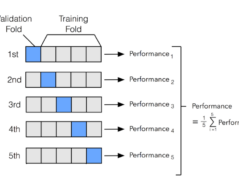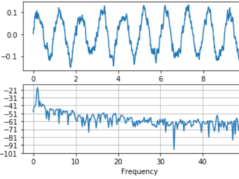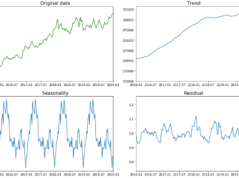
Hierarchical Clustering: Financial Market Analysis
Introduction to Hierarchical Clustering:
Hierarchical Clustering emerges as a potent tool in an era dominated by data. This machine-learning technique is a compass in the vast sea of data, enabling financial market analysts to navigate with precision and confidence.
Understanding Hierarchical Clustering in Machine Learning
Hierarchical Clustering, a method of cluster analysis, classifies similar objects called clusters. Two primary strategies exist - Agglomerative Clustering and Divisive Clustering.
Agglomerative Clustering, often termed bottom-up clustering, starts by treating each object as a standalone cluster. It then combines these atomic clusters into larger ones, iteratively, based on the defined similarity measure until all objects belong to a single cluster.
Divisive Clustering, a top-down approach, begins with the entire set as one cluster. It then partitions the cluster into smaller ones, recursively until each object forms an individual cluster. The choice between these methods depends on the specific application and the nature of the dataset at hand.
Practical Application in Indian Financial Markets
In the financial arena, Hierarchical Clustering finds diverse applications. In equity markets, it aids in portfolio diversification. Portfolio managers often grapple with the challenge of classifying stocks based on their characteristics. Hierarchical Clustering shines a light on this process, enabling managers to construct diversified portfolios that balance risk and return efficiently.
For instance, consider an equity portfolio containing stocks from multiple sectors of the Indian economy - IT, Pharma, Energy, and FMCG. Hierarchical Clustering can help identify clusters of stocks that exhibit similar behaviour, such as stocks within the same sector or stocks that respond similarly to market events. This insight allows portfolio managers to structure their portfolios optimally, ensuring adequate diversification across sectors and risk factors.
Limitations of Hierarchical Clustering
Despite its potential, Hierarchical Clustering comes with its set of limitations. The choice of distance measure for clustering can significantly influence the outcome. A poor choice may lead to misleading clusters that don't reflect the true structure of the data.
Another limitation pertains to the scalability of Hierarchical Clustering. The algorithm can become computationally intensive with large datasets common in today's data-rich environment. This aspect may restrict its applicability when quick results from large datasets are necessary.
Comparing Hierarchical Clustering and K-Means Clustering
To gain a comprehensive understanding, a comparison with another popular clustering technique, K-Means Clustering, proves insightful.
- Initialization: K-Means necessitates prior specification of the number of clusters. Hierarchical Clustering offers flexibility, with no need for such predefinition.
- Structure: K-Means often forms clusters of roughly equal size, while Hierarchical Clustering produces clusters of various shapes and sizes, providing a more nuanced view of the data.
- Algorithm: K-Means iteratively assigns each data point to one of the k clusters, based on feature similarity. Hierarchical Clustering builds a hierarchy of clusters, merging or splitting them depending on the data structure.
- Visualization: Hierarchical Clustering finds representation in a dendrogram, a tree-like diagram illustrating the arrangement of the clusters. K-Means lacks a native visual interpretation.
- Handling of Data Size: K-Means handles larger datasets more efficiently, while Hierarchical Clustering may slow down with increased data size due to its computational complexity.
Illustrative Example of Hierarchical Clustering
Consider a portfolio manager with stocks from three sectors: Technology, Healthcare, and Energy. The task is to understand the underlying structure within the portfolio.
The process begins by collecting historical price data of the stocks. Next, a suitable distance measure, such as Euclidean distance, captures the similarity between stocks. The Hierarchical Clustering algorithm applied to this data identifies clusters of similar stocks. Visualization of the clusters using a dendrogram reveals the inherent relationships within the portfolio, with stocks from the same sector clustering together.
Sample Python Code:
Here's a general approach using pandas (for data manipulation), numpy (for numerical operations), sklearn (for the Hierarchical Clustering) and scipy (for generating the dendrogram):
import pandas as p
import numpy as np
from sklearn.cluster import AgglomerativeClustering
from scipy.cluster.hierarchy import dendrogram
from sklearn.preprocessing import MinMaxScaler
# Load data
key_metrics = pd.read_excel('key_metrics.xlsx')
financial_ratios = pd.read_excel('financial_ratios.xlsx')
# Combine datasets
data = pd.merge(key_metrics, financial_ratios, how='inner', on='stock_identifier')
# Calculate volatility and assign weights
data['volatility'] = np.std(data[['metric1', 'metric2', 'metric3', 'ratio1', 'ratio2', 'ratio3']], axis=1)
data['weight'] = 1 / data['volatility']
# Normalize weights
scaler = MinMaxScaler()
data['weight'] = scaler.fit_transform(data[['weight']])
# Perform Hierarchical Clustering
cluster = AgglomerativeClustering(n_clusters=3, affinity='euclidean', linkage='ward')
data['cluster'] = cluster.fit_predict(data[['metric1', 'metric2', 'metric3', 'ratio1', 'ratio2', 'ratio3', 'weight']])
# Generate Dendrogram
dendrogram = dendrogram(linkage(data[['metric1', 'metric2', 'metric3', 'ratio1', 'ratio2', 'ratio3', 'weight']], 'ward'))
plt.title('Hierarchical Clustering Dendrogram')
plt.xlabel('Stocks')
plt.ylabel('Euclidean Distances')
plt.show()
Conclusion: Embracing Hierarchical Clustering in India's Financial Landscape
To sum it up, Hierarchical Clustering holds immense potential in financial market analysis. Despite certain limitations, it remains a powerful tool for unveiling hidden patterns and relationships in complex datasets. As the Indian financial market continues to grow and evolve, the future lies in embracing advanced methodologies like Hierarchical Clustering. It paves the way towards a more data-driven, insightful, and effective approach to financial market analysis. The question remains - are we ready to step up and embrace this new era of financial market analysis?
Follow Quantace Research
-------------
Why Should I Do Alpha Investing with Quantace Tiny Titans?
1) Since Apr 2021, Our premier basket product has delivered +44.7% Absolute Returns vs the Smallcap Benchmark Index return of +7.7%. So, we added a 37% Alpha.
2) Our Sharpe Ratio is at 1.4.
3) Our Annualised Risk is 20.1% vs Benchmark's 20.4%. So, a Better ROI at less risk.
4) It has generated Alpha in the challenging market phase.
5) It has a good consistency and costs 6000 INR for 6 Months.
-------------
Disclaimer: Investments in securities market are subject to market risks. Read all the related documents carefully before investing. Registration granted by SEBI and certification from NISM in no way guarantee performance of the intermediary or provide any assurance of returns to investors.
-------------
#future #machinelearning #research #investments #markets #investing #like #investment #assurance #management #finance #trading #riskmanagement #success #development #strategy #illustration #assurance #strategy #mathematics #algorithms #machinelearning #ai #algotrading #data #financialmarkets #quantitativeanalysis #money






